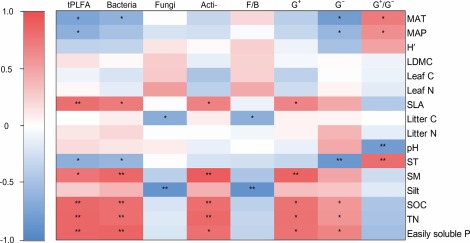
One of paper Xu coauthored has been accepted and now is in press in Applied Soil Ecology
Biogeographical patterns of soil microbial community as influenced by soil characteristics and climate across Chinese forest biomes
Soil microorganisms form an important component of the Earth’s biosphere and play an integral role in carbon, nitrogen and phosphorus cycling. Several biotic and abiotic factors affect the biogeographical distributions of soil microbial biomass (MB) and communities on geographical scales; however, the extent to which soil microbial communities are influenced by these factors is not yet clear. We examined and compared the biomass and structure of soil microbial communities within and between nine mature undisturbed forest ecosystems along the 3700-km North-South Transect in Eastern China (NSTEC). The results showed that soil MB and phospholipid fatty acids (PLFAs) increased with latitude. The structure of the microbial community in boreal forest soils was comparable with that in temperate forests but was significantly different from the microbial communities in warm temperate, subtropical and tropical forests. The mean annual temperature, soil organic carbon, soil total nitrogen and soil easily soluble phosphorus were the main predictors of latitudinal variance in the soil microbial communities. Soils within the same climatic types had similar properties, and soil MB and PLFAs seemed to change along gradients in the various forest types along the NSTEC. Microbial communities showed spatial variation and were dependent on soil properties and climate but were relatively independent of plant functional traits and litter quality. The results suggested that soil microbes could improve the ecosystem models so that they simulate the microbial mechanisms of carbon (C) and nutrient cycling.
https://www.sciencedirect.com/science/article/pii/S0929139317306285

